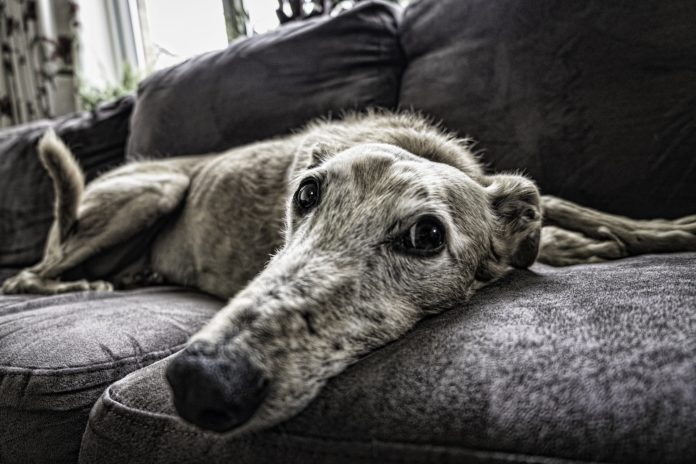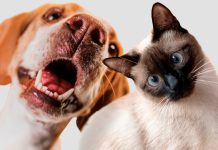People in our society are mostly living longer with better health care, nutrition, and living conditions, and so are our pets. I see pets in their late teens regularly and geriatric medicine is advancing in leaps and bounds. Never dismiss changes in your older pet as “just part of getting old”; there is much we can treat. Quality of life is paramount, not just living.
If you can equate one year of aging in a person to seven in a dog, an annual examination for a pet is like you being seen every seven years by your doctor. Annual examinations are imperative. Veterinarians discuss history, changes in food and water consumption as they examine your pet for masses, aches and pains, and anything else that raises concern. This includes rotten painful teeth. Health care starts with a thorough examination.
Diet is the cornerstone of any older pet’s health needs. An older pet has a slower metabolism and sleeps more. Don’t justify weight gain by saying “but treats are all he enjoys now”. An obese pet has difficulty moving, arthritic joints have to work harder, and stress is placed on all organs including the heart, lungs, liver, and kidneys. It’s easier if a pet is fit and not wheezing with exertion. Diets are available to slow the progress of kidney, liver, gastro-intestinal and heart diseases, as well as arthritis and even dementia.
Unlimited water is imperative in the elderly pet. Kidneys are fragile. If your pet begins to drink and urinate excessively this is an early symptom of many serious, but often treatable, geriatric diseases. Increased urination must be investigated.
Old bodies get relief with heat packs, massage, range of motion exercises, and physiotherapy. Acupuncture, cranio-sacral therapy, laser therapy, chiropractic medicine, and numerous herbal and homeopathic formulas are used successfully to treat old joints, muscles and bone. To this end, remember five to ten minutes of gentle exercise three times daily is preferable to forty minutes of intense exercise with fragile pets. Like you, pets stiffen up and hurt! Older pets have a much-reduced tolerance for heat and cold extremes.
Because they don’t exercise as much, some older cats and dogs tend to need their nails trimmed more often. Elderly pets find it more difficult to groom themselves and may need help. Cats may not be able to contort themselves to reach places on their backs and hind end and fur can become matted.
Older pets may become crankier if sore and maybe are more easily startled if their hearing and sight is failing. Try to make allowances, especially where children are involved. Don’t startle or pounce on elderly pets.
Never chalk up changes in activity level to old age. Quality of life doesn’t exist if a pet is in constant pain. Pets may have difficulty getting up, pant continuously, need to shift often during the night, or isolate themselves… these all can be signs of pain. There are many anti-inflammatory and painkillers now on the market for older dogs and cats to reduce pain. Side effects of some products may have to be balanced against improved quality of life. Older pets deserve a comfortable and gentle retirement, but if all of your best efforts can no longer maintain your friend in a comfortable state and there are many more sick painful days than not, knowing when to say good-by is the least selfish thing you will ever do for an old loved companion.









